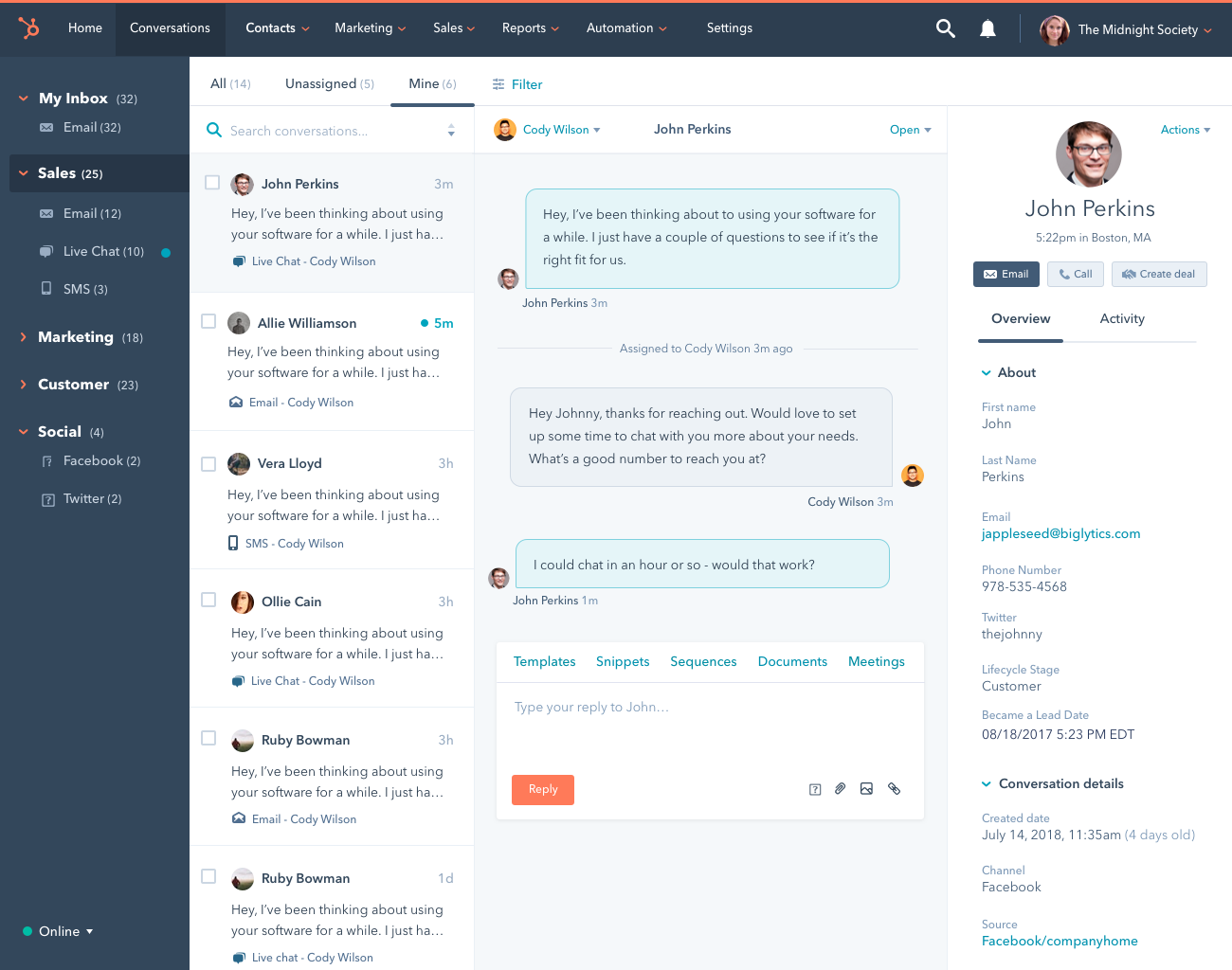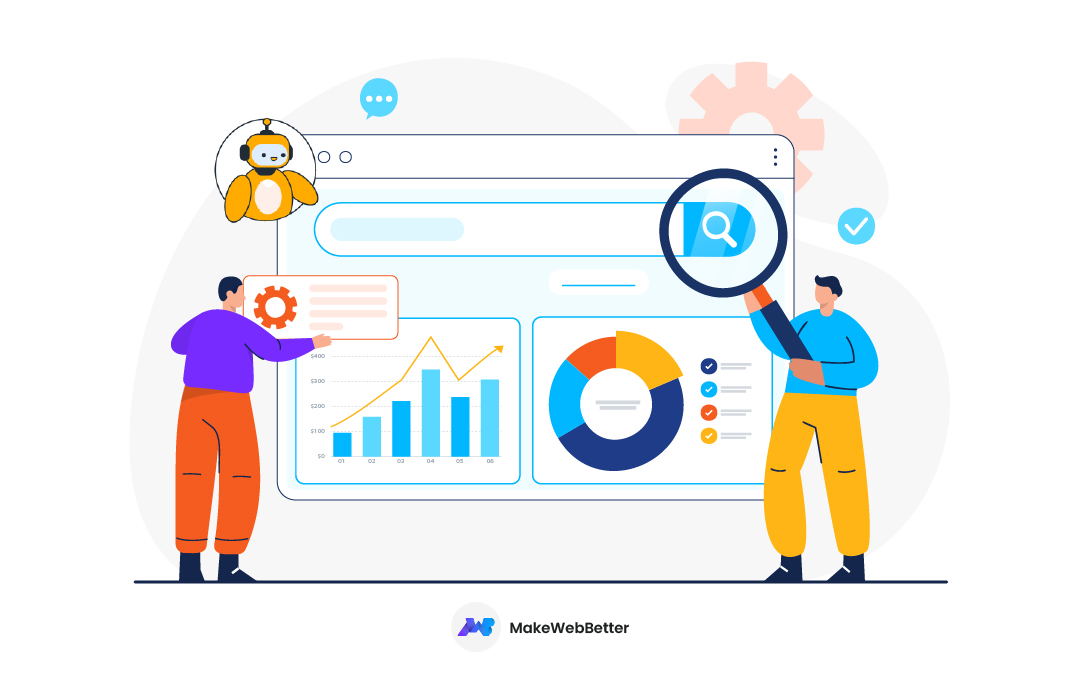With loads of marketing emails, launching lead-generation campaigns, and engaging in numerous customer interactions — are you just throwing things your customers’s way? Despite these best-of-the-best eCommerce marketing strategies, are you lacking?
Here, a core marketing system is an insufficiency in your BigCommerce marketing strategy that needs to be attended to.
And, what other marketing techniques for eCommerce should you employ here? — a CRM, like HubSpot, that binds your BigCommerce marketing strategy through integrated marketing efforts.
Let’s know all about it from a broader viewpoint.
What is integrated marketing?
Integrated Marketing is one of the best eCommerce marketing strategies that proposes to be a smart move. Under this end-to-end marketing strategy, a brand maintains a consistent voice across various marketing channels such as social media, advertising, email marketing, and content creation.

Incorporating the integrated style in your BigCommerce marketing strategy helps to reinforce brand recognition and recall. Even if the voice is indifferent, the consistency you achieve with this end-to-end marketing strategy itself can create a sense of reliability and stability for the audience. This way, you are winning your customers and encouraging sustainable growth.
What tools do Integrated Marketing Campaigns (IMC) involve?
Content marketing, social channels, email promotions, PRs, and every sort of communication between the business and the customer is part of integrated marketing.
Using these tools how do you plan to identify yourself to your customers? Your brand identity must be ensured all around and it must align well with your eCommerce marketing plan so that your customers recognize you no matter where they see you.
But how do you plan to align such operations with end-to-end marketing strategy while ensuring consistency with your message when you’re campaigning? Let’s explore what are the best eCommerce marketing strategies aimed at.
Aligning Integrated Marketing with BigCommerce Marketing Strategy
If you know what you’re aiming at, your eCommerce marketing strategy will be at its finest and create an ecosystem for sustainable growth. The anticipated impact of integrated marketing on your BigCommerce marketing strategy can be staggering.
- Increased Brand Awareness: Utilizing multiple channels and touchpoints in a coordinated manner. This establishes consistent messaging across various platforms and propels strong brand recognition through a unique approach to your eCommerce marketing strategy.
- Enhanced Customer Experience: By ensuring consistency in messaging, branding, and communication, you can create a positive and cohesive experience for customers, leading to increased satisfaction and loyalty.
- Better Targeting and Segmentation: Integrated campaigns enable you to leverage data and insights from various channels to better understand your audience and tailor their marketing efforts accordingly.
- Improved ROI and Cost Efficiency: An integrated BigCommerce marketing strategy allows you to streamline operations, reduce redundancy, and allocate resources more efficiently, ultimately leading to cost savings and improved ROI.
Suggested Read: Essentials of BigCommerce Store Management
Employing BigCommerce Integration Capabilities
To achieve synergy among various components — content marketing, social media marketing, automated email marketing, SEO efforts, & PPC advertising, you must consider the integration capabilities of the platform for the ultimate BigCommerce marketing strategy.
Suggested Read: What Is HubSpot eCommerce Bridge?
HubSpot BigCommerce Integration
What does a CRM offer for your eCommerce marketing strategy? The HubSpot BigCommerce integration gives you tools, rich marketing features, workflows, templates, and everything. With the right HubSpot implementation, all this together reduces redundancy and brings efficiency to your efforts.

Moreover, the HubSpot marketing integration hands you rich data extracted out of BigCommerce, and loaded into a powerful CRM for optimum utilization. With this data, you gain insights, segment better, and propel in accordance with your eCommerce marketing plan.
Get HubSpot BigCommerce Integration!
Score big with your BigCommerce marketing plan, having HubSpot alongside. Connect your BigCommerce store with HubSpot and get started.
Rich Customer Data Consolidation
Customer lifetime, purchase history, browsing behavior, interactions with marketing campaigns, and all such eCommerce customer data. Also, having all this data in one place enables marketers to have a comprehensive view of the customer’s journey.
BigCommerce integration with HubSpot not only obtains seamless syncing but also allows mindful data organization through segmentation in HubSpot contacts — properties, lists, and groups.

To bolster your marketing experience, HubSpot has a unique contact management feature called “Marketing Contact”. You can assign this status to the contacts and assign targeted workflows, campaigns, and interactions with them. Decide on marketing contacts on the basis of RFM rating and behavior reports.
Suggested Read: How To Get The Most Out Of HubSpot?
Search Engine Optimization
Marketing is incomplete without SEO. Thus, HubSpot offers a comprehensive suite of tools and resources designed to optimize online visibility, drive organic traffic, and enhance search engine rankings for businesses of all sizes.
Your WooCommerce SEO becomes better with HubSpot, bolstering your marketing efforts and propelling sustainable growth. With HubSpot SEO recommendations and content assistant powered by Semrush, you give your WooCommerce marketing a chance at rich organic traffic and visitors.
Marketing Automation
Workflows are tailored to individual contacts, providing a seamless and personalized experience for each customer. With HubSpot marketing workflows, users can establish marketing automation specifically for eCommerce that triggers actions such as sending emails, updating contact properties, assigning tasks to team members, and better marketing.

These workflows can be customized to fit specific business goals and customer segments, allowing marketers to deliver the right message to the right person at the right time.
Suggested Read: Payment Automation Solutions With CRM Integration
Campaign Builder
The Campaign Builder solution by HubSpot provides a centralized dashboard for campaign management, making it easy to coordinate marketing activities and ensure a cohesive brand message across channels.
Users can create and manage campaigns across email, social media, ads, and more, while also tracking performance metrics to optimize future efforts. In other words, HubSpot’s Campaign Builder allows marketers to plan, execute, and track multi-channel marketing campaigns from a single platform.
Email & Sequences
HubSpot offers robust email marketing capabilities for your Woo store, including drag-and-drop email builders, customizable email templates, and automated email workflows. Moreover, marketers can create transaction emails tailored to different segments of their audience, and track metrics such as open rates, click-through rates, and conversion rates to measure campaign effectiveness.

In addition to this, you have HubSpot’s email sequences feature. It enables marketers to automate and personalize email communication sequences based on customer behavior and preferences. This allows for even more targeted and personalized messaging, helping to drive engagement and nurture leads through the sales funnel.
Social Media
HubSpot BigCommerce integration with CRM data allows marketers to tie social media interactions back to individual contacts, providing valuable insights into customer behavior and preferences.

HubSpot’s social media tools enable marketers to manage and publish content across multiple social media channels, engage with followers, and track social media performance metrics. It also facilitates social media automation — users can schedule posts in advance, monitor brand mentions and conversations, and analyze the impact of social media efforts on key business goals.
Centralized Inbox

HubSpot’s centralized inbox aggregates messages from multiple communication channels, including email, live chat, and social media, into one unified inbox. This allows marketing and sales teams to manage customer inquiries and communications more efficiently. Furthermore, it ensures timely responses and a consistent customer experience across channels. This enables teams to access relevant customer information directly within the inbox, helping to personalize interactions and provide more contextually relevant responses.
Live Chat
HubSpot’s live chat feature allows businesses to engage with website visitors in real-time. Use it to answer queries, provide support, and guide them through the much-awaited BigCommerce checkout. Marketers can customize chatbots to automate responses to common inquiries. Also, you can route more complex queries to human agents as needed. Moreover, the HubSpot BigCommerce Integration enables personalized chat interactions based on past customer interactions and preferences. This helps you drive conversions and build stronger customer relationships.

Reporting & Analytics
Having HubSpot by your side isn’t just a BigCommerce marketing advantage — you get a broader range of your customers too. With the help of these, gain deeper insights into the customer journey, identify trends, optimize campaigns, and make data-driven decisions to drive business growth.

HubSpot provides comprehensive reporting and analytics tools to track the performance of marketing campaigns, sales activities, and customer interactions. In addition to this, users can create custom dashboards and reports to monitor key metrics such as website traffic, lead generation, conversion rates, and revenue attribution.
BigCommerce Marketing Strategy?
To begin, you must clearly define your eCommerce promotion strategy for your BigCommerce store and follow this path to success. Let’s see how it’s gonna go.
Define And Align Goals With eCommerce Promotion Strategy
Begin by defining your marketing goals clearly. Whether it’s increasing sales, expanding brand awareness, or driving marketing techniques for eCommerce website traffic. Also, make sure that these goals should directly align with your overall business objectives to ensure coherence and effectiveness.
Identifying Target Audience Personas
Understanding your target audience is essential for tailoring your marketing efforts. Next, develop detailed personas around a solid eCommerce promotion strategy that encompasses demographics, interests, pain points, and purchasing behavior. This insight will guide your messaging and channel selection.
Selecting Appropriate Marketing Channels
Choose the marketing channels that best reach your target audience. Whether it’s social media, email, SEO, content marketing, or paid advertising, prioritize the platforms where your audience is most active.
Content Creation and Distribution Plan
Create compelling and relevant content that aligns with your BigCommerce marketing strategy, engages your audience and drives them to action. This could include product descriptions, blog posts, videos, infographics, or user-generated content. After this, develop a distribution plan to ensure your content reaches the right audience through various channels.
Establish a Consistent Brand Voice & Message
Consistency is key to building brand recognition and trust. Define your brand’s voice, tone, and messaging guidelines to maintain coherence across all marketing efforts. Ensure that your brand personality resonates with your target audience and sets you apart from competitors.
Metrics to Measure Success
Identify key performance indicators (KPIs) to measure the success of your marketing efforts. These could include marketing metrics such as website traffic, conversion rate, customer acquisition cost, customer lifetime value, and social engagement. Regularly monitor these metrics to gauge the effectiveness of your strategy and make necessary adjustments.
Suggested Read: Step-by-Step Guide to BigCommerce Store Development
Implement The Big HubSpot Strategy
Having a centralized management system bolstering your BigCommerce marketing strategy – builds stronger customer relationships, and solidifies your campaigns.
Moreover, the HubSpot system also prepares the ground for integrated marketing. Connect BigCommerce with HubSpot to leverage this technique, build the best eCommerce marketing strategy, and connect better with your audience.
Share the challenges you face with your current marketing strategy for the eCommerce store in the comments. So that we can look for the solution together.










